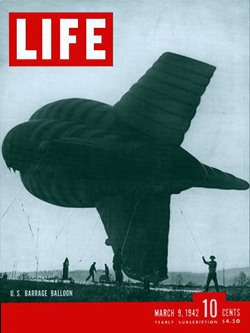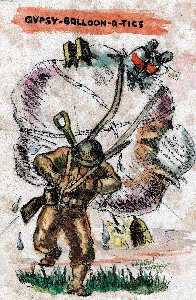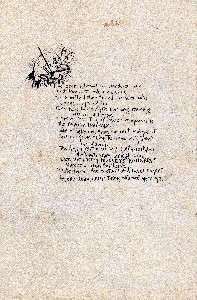Barrage Balloon Cartoons
Barrage balloons have been employed by the military ever since airplanes were first used in warfare.
They consist of a large, gas filled, lighter than air blimps that are tethered to the ground by a
cable that is attached to a winch. Their sole, but important, purpose is to prevent enemy aircraft
from strafing or dive bombing the area where they are tethered.

At the beginning of WWII, the Army transferred responsibility for barrage balloons from the Army Air Corp to the Army Coast Artillery branch. Captain William J. A. Hussey was transferred to newly constructed Camp Tyson, TN in April 1942 to help organize one of the first Barrage Balloon Battalions.
He, as Commanding Officer, 102nd AAA Barrage Balloon Battery, participated in the invasion of North Africa. Subsequently, North Africa became the staging area for the invasion of southern Italy and that then led to the Anzio landing.
With all that said, the story of the barrage balloon drawings is much shorter. As the 102nd boarded ships to be part of the invasion of Italy, elements of the unit were required to stay behind to provide barrage balloon support to important locations in North Africa. Among those staying behind was H. Weinstein, the artist who drew the cartoons. Nothing is known about H. Weinstein other than he was a talented artist and poet. Major Hussey was never reunited with his North Africa contingent because he was injured at Anzio and shipped back to the U.S. for treatment and rehabilitation.
Click an image to enlarge and zoom.

Drawing One

Drawing One - Back

Drawing Two